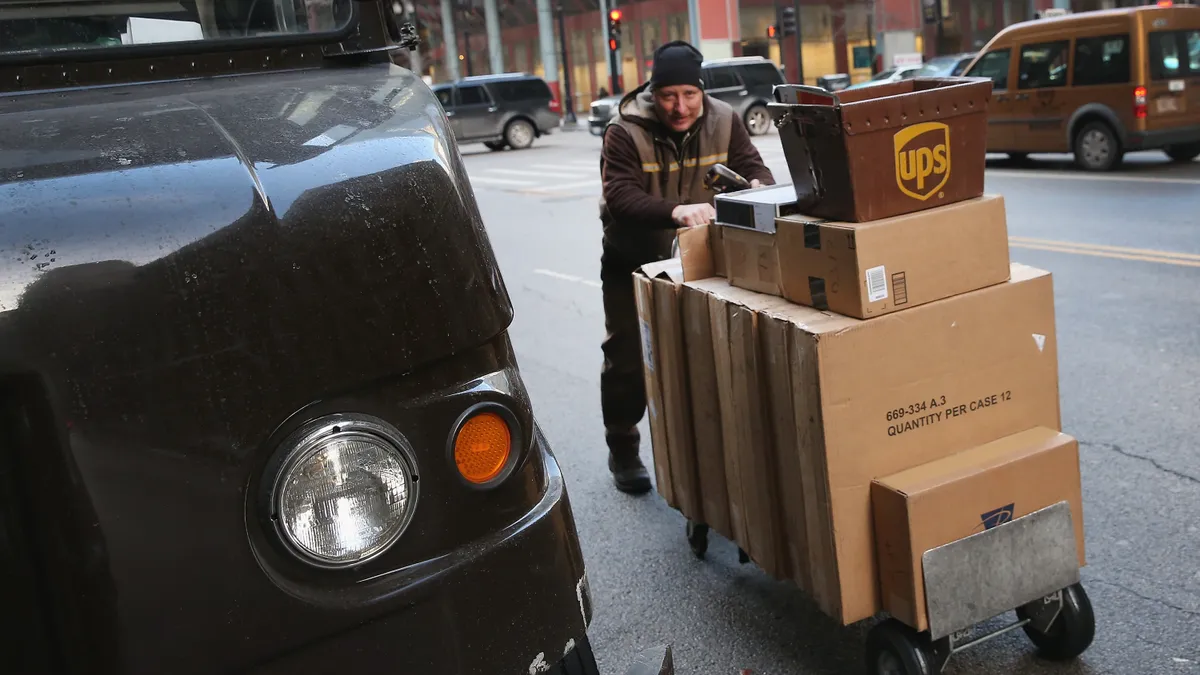Dive Brief:
- Amid projected holiday sales increases, CBRE and Optoro predict in a new report that consumers could return as much as $66.7 billion in holiday purchases, a 45.6% increase over the previous five-year average.
- For an item valued at $50, the cost of returns for retailers has increased from 59% of the price last year to 66% this year. Electronics like laptops, cell phones and tablets will have the highest reverse logistics costs per item because of their size, testing, refurbishing and online sales fees, according to the report.
- Higher sales and returns mean more demand for warehouse space, but availability is limited as 23 industrial markets in the U.S. have vacancy rates below the national average of 3.6% as of Q3 2021. And as many retailers rely on third-party logistics providers, third-party logistics providers hold 30% of large industrial leases of 100,000 square feet or more in 2021, an increase from 27% in 2020, per the report.
Dive Insight:
Last year's returns during the first year of the COVID-19 pandemic may offer some insight into what retailers can expect this year. As consumers turned to online shopping during the coronavirus pandemic, e-commerce returns surged alongside the sales increases. UPS anticipated 8.75 million returns during the week of Jan. 6 this year, a 23% bump compared to the highest week of returns during the previous holiday shopping period.
Though returns have a high cost for retailers' bottom lines and the environment, this year's supply chain disruptions could make returns even more expensive. Per a survey from the Reverse Logistics Association, over half of respondents expect product return costs to rise, and 65% expect the volume of returns to increase, though nearly a third said their returns will remain the same. Parcel deliveries are already becoming costlier. In August, FedEx announced more surcharges for packages that will continue into early 2022.
"E-commerce holiday gift returns have always been a significant challenge for retailers, but this year will be particularly difficult," John Morris, executive managing director, and industrial and logistics leader, said in a statement. "With the growth of e-commerce during the pandemic and the increasing costs across a bruised supply chain, reverse logistics will be tougher and more costly than ever before for retailers this holiday season."













